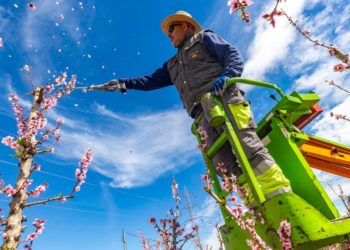An enduring urban legend has it that blind, albino alligators patrol New York City’s sewers. These mythical crocodilians have become ingrained in the city’s lore, and some New Yorkers even celebrate Alligator in the Sewer Day each February.
But in Florida, alligators in the sewers are no myth. The reptiles routinely find their way into municipal drainpipes. In late January, a 10½-foot gator was rescued in Cape Coral after it got stuck in a storm drain.
And not all alligators end up in sewers by accident. Recently published research in the journal Urban Naturalist reveals that alligators and nearly three dozen other species use storm water sewer systems in one urban area of Florida to safely traverse urban environments.
“It’s like something out of ‘Teenage Mutant Ninja Turtles,’” said Alan Ivory, a Ph.D. student at the University of Florida who led the research. “The abundance of animals down there was surprising.”
While there has been thorough research on rats in sewer systems, what other animals are up to under the streets is less documented. Mr. Ivory and his colleagues suspected that these subterranean labyrinths, which are built to divert storm water and are separated from sewage systems, serve as important pathways for urban animals.
Mr. Ivory and his colleagues focused on storm water sewers under the city of Gainesville. The scientists outfitted motion-activated trail cameras with magnetic mounts and fastened them underneath manhole covers. Overall, 39 cameras were deployed in 33 storm water drains.
The cameras were left for 60 days, but not all of them survived that long. Some were swept away by storm water, while others were pilfered by bandits with sticky paws.
“We would have raccoons steal cameras every now and then,” Mr. Ivory said. “They would climb up the ladders and tear them off the manholes.”
Despite these masked marauders’ best efforts, the team was able to recover most of the cameras, which recorded nearly 3,800 sightings of 35 animal species. The sewer inhabitants included the usual suspects like possums and rats. But there were surprises: tree frogs, armadillos and 12 species of birds, including Carolina wrens. These small birds were observed in six different storm drains, occasionally with nesting material in tow.
Mammals were the sewer’s most common critters. Raccoons were caught on camera more than 1,800 times. The second-most-spotted animals were southeastern myotis bats, which were observed nearly 700 times. These small bats used the sewers to forage for insects and appeared to be roosting underneath manholes, a first for the species, according to Mr. Ivory.
Some larger species, like whitetail deer and a bobcat, were recorded milling near the sewer entrances. But few behemoths ventured inside, save for alligators.
The team recorded 50 alligator sightings. Most appeared to be using the sewers as thruways between ponds. But the team also observed the occasional alligator swimming toward a dead end, on the hunt for fish. “It’s almost as if they were cornering the fish into this dead end, using the human infrastructure to help them forage,” Mr. Ivory said.
While the scientists studied only the Gainesville area, they think similar species use storm water sewers in urban areas throughout Florida. The state has even built tunnels to help imperiled Florida panthers avoid busy streets.
Jochen Jaeger, a researcher who studies landscape ecology at Concordia University in Montreal and was not involved in the new study, already suspected that some species use storm water drains. However, he said, the paper illustrates the degree to which urban animals have co-opted these human-made structures.
In his own work, Dr. Jaeger has examined how wild mammals, including black bears and moose, use underpasses like culverts to cross busy highways in a mountainous region of Québec. Retrofitting these often-submerged tunnels with dry pathways could make them more accessible to wildlife.
Mr. Ivory and his colleagues believe Florida’s storm water sewers could similarly be improved. During the study, the team observed that snakes and toads often washed into the sewers during heavy rains and occasionally had trouble getting back out. Installing ramps near storm drains could help trapped critters escape to safety.
These alterations could be vital for other sewer dwellers, too. The southeastern myotis bats hanging from the manholes are at risk of being trapped without additional escape hatches. And some populations of these bats are in decline because of a lack of suitable cave environments in Florida’s urban areas.
“If sewers act as an artificial roost, that can make these systems extremely valuable,” Mr. Ivory said. “But if a flood were to occur when there’s roosting bats, they could get washed away.”
The post This City’s Sewer System Is Full of Alligators, but It’s Not New York appeared first on New York Times.




